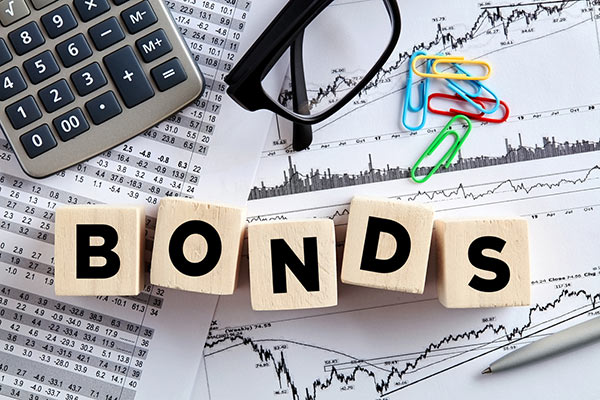The bond funds making money despite the fixed-income crash
Sam Benstead highlights the funds that have delivered a positive return since interest rates began rising at the end of 2021.
31st October 2023 13:17
by Sam Benstead from interactive investor

Just 21 of 311 funds from the most prominent Investment Association fixed-income sectors for UK investors have delivered a positive return since interest rates began to rise in December 2021.
Higher interest rates crashed the bond market, as investors priced in a higher interest rate, higher inflation environment.
- Invest with ii: How Bonds & Gilts work | Free Regular Investing | Open a Stocks & Shares ISA
Bloomberg data shows that this has been the biggest bond crash in 150 years, with bonds now looking set to register three consecutive calendar years of negative returns. After falling 6% in 2022, global bonds, as measured by the Bloomberg Global Aggregate index in sterling, are down another 4% this year. The index fell 4% in 2021, making it three painful years for bond investors.
But not all bond funds have registered losses since 16 December 2021, when the Bank of England became the first major developed world central bank to increase rates, taking them from 0.1% to 0.25%.
Data from FE Analytics shows bond funds that own short-dated bonds, asset-backed bonds and floating rate bonds were among those delivering positive returns for investors. The sectors screened were: Sterling High Yield, Sterling Corporate Bond, Sterling Specialist, Sterling Strategic Bond, UK Gilts, UK Index-linked Gilts, and Specialist Bond.
- Benstead on Bonds: the bond crash has broken records – is it finally time to buy?
- Bond Watch: here’s why bond prices keep on falling
Funds that own short-dated bonds, meaning that they are set to mature relatively soon, are less sensitive to changes in interest rates. In market speak, they have low “duration”, as investors are less worried about being stuck with a low-yielding bond if it is going to mature soon.
Allianz US Short Duration High Income Bond is up 10.6% over the period, M&G Short Dated Corporate Bond rose 2%, and AXA Global Short Duration Bond was flat.
Floating rate bonds, which adjust coupons with interest rates, also proved resilient, as higher interest rates increased income payouts to investors.
The iShares $ Floating Rate Bond UCITS ETF was the top fund, returning 17% over the research period and the iShares Euro Floating Rate Bond UCITS ETF rose 6%.
Currency movement played a big role in returns across all sectors, with portfolios that owned US bonds outperforming due to a strong US dollar over the research period.
Similarly, asset-backed bonds, such as portfolios that own private loans or mortgages, can also adjust coupons with interest rates rises, making them another form of a floating rate bond.
Top funds in this space include: Janus Henderson Secured Loans (7.5% return) and TwentyFour Asset Backed Opportunities (6.15% return).
- Don’t expect UK interest rates to fall in 2024
- Bond Watch: what ‘higher for longer’ rates mean for bond prices
More niche funds also made investors money, such as Gam Star Cat Bond. Catastrophe bonds, also known as “cat” bonds, are issued by insurance companies to help them cover the costs of natural disasters. If no catastrophe occurs, the insurance company pays a coupon to the bond owner. The fund and sector has been benefiting from the lack of natural disasters as well as rising interest rates globally.
Other specialist bond funds performing well as interest rates rise include: iShares China CNY Bond UCITS (8% return), Janus Henderson Multi Asset Credit I Hedged (3% return) and M&G UK Inflation Linked Corporate Bond (1.8% return).
The worst-performing bond funds
Making any money in bond markets over the past couple of years looks even more impressive when considering how much some portfolios have collapsed in value.
Bonds with long maturity dates have been particularly badly hit due to their higher “duration”, and in particular gilt portfolios, where bonds can have more than 50 years until maturity.
Long-duration bonds typically have lifespans of 20 to 30 years. Given that investors have to wait a long time for their capital to be returned, a higher level of income is demanded to compensate for the greater levels of risk involved. As a result, this part of the bond market is the most sensitive to rises in interest rates. For every 1% rise in interest rates, a bond’s price will fall by about 1% for every year of duration.
Funds dropping around 50% since rates first increased in the UK include: Janus Henderson Inst Long Dated Gilt, Vanguard UK Long Duration Gilt Index and iShares Over 15 Years Gilts Index.
Inflation-linked bonds also stand out for their poor performance, as they tend to have longer maturity dates than regular bonds, meaning they have a high duration.
Fidelity Index Linked Bond, AXA Sterling Index Linked Bond and Janus Henderson Index-Linked Bond were among the worst performers, losing investors just under 50% in nearly two years.
These articles are provided for information purposes only. Occasionally, an opinion about whether to buy or sell a specific investment may be provided by third parties. The content is not intended to be a personal recommendation to buy or sell any financial instrument or product, or to adopt any investment strategy as it is not provided based on an assessment of your investing knowledge and experience, your financial situation or your investment objectives. The value of your investments, and the income derived from them, may go down as well as up. You may not get back all the money that you invest. The investments referred to in this article may not be suitable for all investors, and if in doubt, an investor should seek advice from a qualified investment adviser.
Full performance can be found on the company or index summary page on the interactive investor website. Simply click on the company's or index name highlighted in the article.